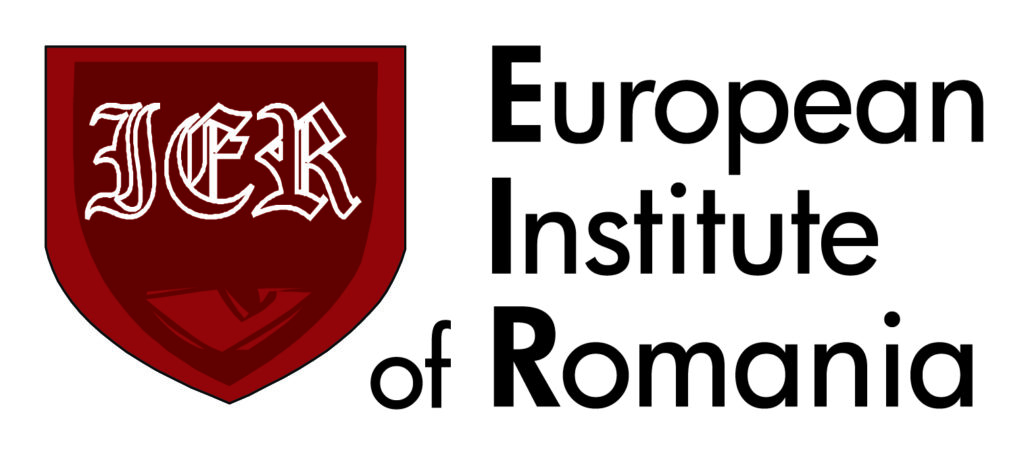Main points:
– Poland should develop cooperation in both bilateral and regional forms, as well as in the global dimension, in order to strengthen the state’s position as an important element of the international security system.
– The Ukrainian government must already accept that a definitive end to the harmful activities of Russian separatists without entering open conflict is not at all possible and that their constant activity could be the beginning of disputes in further regions.
– The Kremlin indicates that it wanted to support Russian-speaking communities in order to sustain national identity and provide assistance to those with Russian roots living in Ukraine.
– It does not seem that, in the near future, Poland and Ukraine will cooperate on the same level as France and Germany, or the USA and Canada.
– There are at least a few options under which ties can be strengthened. However, a simple neighborly cooperation in order to intensify the defense capabilities of both countries in case of a conflict in Eastern Europe, it would be enough.
Poland’s current strategy
The current geopolitical situation in Ukraine pushes one to reflect. Although the armed conflict in Donbas began more than 7 years ago, there are still no concrete solutions that would positively influence the normalization of the regional order. Despite Poland’s firm stance towards the Russian Federation as well as the increasingly close relations between Ukraine and the North Atlantic Treaty Organisation (NATO) and the European Union (EU), there is still a long way to the end of the conflict in Donbas or to the recapturing of Crimea. The protracted state of emergency in eastern Ukraine also affects the decision-making process in Poland. Future endeavours undertaken in the field of security, hitherto in the nature of military non-interference, are gradually transforming into highly active participation towards building a NATO-based wall to stop a potential conflict. Consequently, the question arises whether Poland’s security in the context of the situation in eastern Ukraine should be a priority for Warsaw if the conflict in Donbas continues for another year; yet it is no longer burning, but rather a smouldering rivalry. Of course, the Russian exercises near the Ukrainian border are a demonstration of power, but the NATO coalition (e.g. as part of Defender Europe 21) is also showing its military capabilities. In this situation, Poland should put more emphasis on digital security, prepare to counteract Russian disinformation, and strengthen the development of the arms industry through regional cooperation under initiatives such as the Lublin Triangle.
The National Security Strategy of the Republic of Poland of 2020 invariably indicates a neo-imperial policy that is pursued by the Russian Federation not only through historical revisionism but also through the use of military force, as one of the most serious threats to the country today. Examples of such pursuit are the aggression against Georgia, the annexation of Crimea, and operations in eastern Ukraine, which in their essence violate the basic principles of international law and undermine the pillars of the European security system. Moreover, it was pointed out that Poland should develop cooperation in both bilateral and regional forms, as well as in the global dimension, in order to strengthen the state’s position as an important element of the international security system. The entire Polish strategy regarding the conflict between Ukraine and Russia was defined within a single document. It is intended to include activities to strengthen the independence, sovereignty and territorial integrity of its neighbour, and thus Poland should support the aspirations of Ukraine for fulfiling European and Euro-Atlantic aspirations and engage in stabilization activities in the eastern environment of Poland, among others, in the framework of the Eastern Partnership.
More than a year has passed since the approval of the Strategy, but there is no concrete, wide-ranging action to help Ukraine break the impasse in which it finds itself. The issues of migration or trade should not be taken into account, as this is a fairly natural process that occurs between neighbouring countries. Rather, what should be distinguished are the issues of military agreements, joint exercises and training, providing support for intra-state activities or through the adoption of legal instruments that allow cooperation. So far, such bilateral activities have not occurred, neither has there been a unilateral initiative.
One should reflect on the situation in Ukraine in two contexts. Firstly, what should be Poland’s role both in the framework of cooperation with the U.S. and in the overall strengthening of NATO’s eastern flank. It is quite common knowledge that the role of the international alliance in keeping the troops in readiness in Central and Eastern Europe is crucial for the former Eastern Bloc states. Secondly, it is worth considering how the situation in Ukraine may evolve in the future and whether it will involve the annexation of further regions. It is worth considering Poland’s strategy in the case of an escalation of the situation in Donbas. The continuing impasse shows that the position of the Russian Federation in eastern Ukraine can only grow stronger, as its influence in that region intensifies. Accordingly, the Ukrainian government must already accept that a definitive end to the harmful activities of Russian separatists without entering open conflict is not at all possible and that their constant activity could be the beginning of disputes in further regions. Moreover, a definitive determination must be made as to whether Donetsk and Luhansk are ever again to return to Kyiv’s complete control, which will, sooner or later, involve an intensification of the armed rivalry in Donbas.
The growing sense of uncertainty resulting from the attitude of the Russian Federation
In Poland, the distinct increase in the sense of the threat from Russia dates back to the period when the annexation of Crimea took place. That time was full of concerns and the possibility of a major armed conflict or a Third World War was then allowed. At that time, many theories emerged suggesting that after occupying Crimea, Russia would occupy eastern Ukraine and later conquer the entire country militarily. The next supposed phase was an attack on the Baltic states, i.e. Lithuania, Latvia and Estonia, and later also Poland. Some publicists considered the possibility of the outbreak of this conflict as one of the most dangerous situations for the security of Poland after World War II.
Polish stance
Poland – as a whole organism – should, with its needs and interests in the region in mind and learn to react to misinformation. It is worth adding that many theses put forward about the war with Russia do not result from a thorough analysis of the situation, but rather from anti-Russian attitudes and involvement in Ukraine’s internal affairs. No one denies the fact that the Russian Federation is the aggressor. However, it is necessary to define what are Poland’s individual needs and to pursue them. Engaging for 7 years in international disputes is not effective and will not change Ukraine’s situation. Therefore, if Poland feels a rational desire to support its eastern neighbour, then the political struggle with Russia has so far been very ineffective, and consecutive joint rallies of Polish and Ukrainian presidents, calling for European values (“Europeanization” of Ukraine), will not contribute to a more rapid end of the conflict. Cooperation with Ukraine, for example in the form of developing a joint battalion or working on creating a combat drone, seems to be much more effective and efficient. To conclude, both Poland and Ukraine must cease to treat each other as “second-tier” partners (sometimes even third) if neighbourly cooperation is to develop. So far, it looks as if Poland is in a privileged position, but it is Ukraine that is forming more lucrative alliances from the point of view of military development – both in terms of developing its own structures and selling weapons. Partners such as India, Saudi Arabia and Turkey are worth mentioning.
Russian stance
At the same time, the reasons for the actions of the Russian Federation in the Donbas should be taken into account. It seems that the theory presented below is unpopular, and thus it is very rarely presented in the scientific-expert community. However, it is necessary to look at the problem from a different perspective, taking into consideration Russian history. The Kremlin indicates that it wanted to support Russian-speaking communities in order to sustain national identity and provide assistance to those with Russian roots living in Ukraine. Therefore, Russia demonstrates the reasons behind its decision to occupy Crimea and intervene in the Donbas. This is an extremely complex subject and requires much research in the fields of ethnography and demography, but it does not fully disqualify Russian demands – if the issue of national minorities is taken into account. In this context, the key factor which has dissuaded the international community from Moscow so much is not Russia’s needs and demands. The problem is the manner in which the intervention and armed aggression against Ukraine was carried out. The Ukrainian issue could have been resolved differently – peacefully – by negotiating over the situation of the residents in Donbas. Now – if there was indeed a fight for the Russian minority in eastern Ukraine – the population remains in the combat areas and they are in an even worse situation than before the conflict. Therefore, Russia has lost its only quasi-true argument. Moreover, the Russian Federation once again proved that it is aggressive, uncompromising, and does not reckon with the international community, using a strategy of deterrence and hostility towards weaker (then part of the USSR) states. It did not manage to influence Ukraine politically, as it did with Belarus, so it decided to use the military alternative.
Ukrainian stance
Poland’s contemporary international relations with Ukraine are varied in nature. On the one hand, they can be described as correct with a chance for positive development (see the Lublin Triangle). On the other hand, one should be aware of the influence of the Russian Federation in this country, the not entirely transparent policy of V. Zelenski in relation to Warsaw – including the lack of Poland in the Normandy format – and the growing lack of trust of the Ukrainian society for the Servant of the People party. It does not seem that, in the near future, Poland and Ukraine will cooperate on the same level as France and Germany, or the USA and Canada. Bilateral cooperation requires both sides to be willing to undertake it because they see a purpose in it, and other entities cannot prevent them from establishing such relations. As such, it is to be hoped that the governments in Kyiv and Warsaw will see beyond individual goals that will guide both countries towards building a stable Central and Eastern Europe. Even if the Russian Federation were to try to influence the Polish – Ukrainian relations, the relation should be strong enough not to collapse at the first “test” in the international environment.
While analysing Ukrainian efforts to join international organisations and engage in cooperation with Poland, one can get the impression that Ukraine does not reciprocate Polish efforts. It is repeatedly the initiative of Warsaw to raise the issues of conflict with Russia, tightening economic cooperation based on Eastern Europe, as well as lobbying Kyiv’s requests for support in the international arena. Ukraine needs partners from the West and it is obvious that the best one would be the US. However, in the current game and with Ukraine’s enormous needs, it is Poland that is geographically and culturally the closest, and it could prove to be the key partner who, for the time being, is eager to strengthen ties. It seems that both countries have potential cooperation in the back of their minds, but according to them, there is always another, better foreign partner. Either this situation will develop positively, or one of the parties will give up. After all, how long can one rely on the commonality of a mutual enemy and economic migration?
Also noteworthy is the Eastern Partnership, which suggests that cooperation with the European Union is more valuable for Ukraine, Moldova and Georgia (but no longer for Belarus) than strengthening relations with Russia. This is an important project for Poland, which invariably remains on the eastern border of NATO and the EU. Therefore, the Polish government should pursue this cooperation at all costs, as it is also important in the context of the development of energy security and the economy.
It seems that one of the turning points for Ukraine was its entry into the Alliance’s Enhanced Opportunity Partners Program on June 12, 2020. NATO offers this specific type of cooperation to countries which are involved in missions and operations for the Alliance. Ukraine has participated in more than a dozen NATO operations, including in Kosovo and Afghanistan, among others, and offers permanent military cooperation to all members of the Alliance. This is intended as a kind of protection against Russian aggression and to seek support from Western European countries that have so far been reluctant to Ukrainian membership. Such deepened cooperation is to be the last step before Ukraine joins NATO, provided that all members approve. However, this seems doubtful in the current situation, especially from the French, German, English and Hungarian perspectives. However, the role of Poland, which strongly supports Ukraine in its accession, is worth mentioning.
It is also important to mention that until the conflict in Ukraine is over, Ukrainian accession to NATO is out of the question. In other words, while there is an ongoing conflict on this territory, however frozen, nothing will happen. Moscow has Kyiv in its grip, so it will be to their advantage to maintain such a situation.
The same opportunity for years
The seizure of Crimea by the Russian Federation and its subsequent annexation to its territory was opposed by most countries and organizations in the world. The annexation of Crimea was accepted by only a dozen countries, including Afghanistan, Armenia, North Korea, Serbia, Syria, and unrecognized South Ossetia and Abkhazia. Despite objections from the international community, the Russian Federation recognizes the occupied territory as its own due to the Russian community inhabiting the region. The parliament in Crimea refers to the March 16, 2014 referendum on the peninsula’s annexation to Russia, in which nearly 97% of people voted to join Russia. Since then, Kyiv has been under constant pressure from Moscow, and there is little that Brussels, Washington, and Warsaw can do to change this state of affairs. Therefore, it is necessary to consider two solutions that can have a real impact on the situation: the imposition of more sanctions on Russia by all NATO and EU member states (Germany, France and Turkey as well), and the fastest possible effort to include Ukraine in the structures of the aforementioned international organizations. Both scenarios mentioned above are unrealistic these days, so we need to return to the initially proposed methods and the most fruitful strategy for both sides: enhancing Polish-Ukrainian cooperation in the military field, if indeed for Poland (according to the 2020 Strategy) Russia, and consequently, the conflict in Ukraine, constitutes the primary threat.
If Belarus is completely dependent on Russia, and both countries carry out joint operations, such as the seizure of the plane flying to Vilnius, there is no prospect of establishing relations, both with the European Union and Poland, which could bring Minsk closer to the West and at the same time distance it from Moscow. Therefore Ukraine remains the only entity that is still in the game for influence from the former republics of the USSR (it is also worth looking at Kazakhstan, which despite constant military cooperation with Russia, sees profits from cooperation with e.g. the EU). Moreover, both countries have invested in the purchase of Turkish drones and have moved closer to Turkey. So perhaps here is where mutual benefits can be found. Basically, there are at least a few options under which ties can be strengthened. It is enough to mention the Lublin Triangle, NATO’s Enhanced Opportunities Partners Program, the Eastern Partnership, and ultimately, because of the shared border, simple neighbourly cooperation to intensify the defence capabilities of both countries in case of a conflict in Eastern Europe. Poland will chair the OSCE next year. Perhaps this will be an opportunity to strengthen Polish-Ukrainian relations, especially in the context of the mission (OSCE SMM) in Ukraine.
IF YOU VALUE THE INSTITUTE OF NEW EUROPE’S WORK, BECOME ONE OF ITS DONORS!
Funds received will allow us to finance further publications.
You can contribute by making donations to INE’s bank account:
95 2530 0008 2090 1053 7214 0001
with the following payment title: „darowizna na cele statutowe”

































Comments are closed.